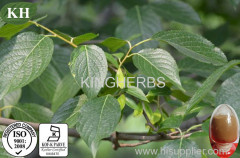|
KINGHERBS Li
|
High Quality Chasteberry Extract Angusides 0.5% by HPLC;10:1
| Price: | 15.0 USD |
| Payment Terms: | T/T,L/C,Paypal |
| Place of Origin: | Hunan, China (Mainland) |
|
|
|
| Add to My Favorites | |
| HiSupplier Escrow |
Product Detail
The herb known as chasteberry has had its advantages recognized for several generations. This herb is also called vitex agnus-castus
Product Name: Chasteberry Extract
Botanical Source: Vitex agnus castus
Plant Part Used: Fruit
Plant Introduction
The herb known as chasteberry has had its advantages recognized for several generations. This herb is also called vitex agnus-castus. The name of the plant itself is vitex, and it is a native plant in the Mediterranean region.
The dried herb can be used in yet another form: tea. Although there are many manufacturers of ready - made tea on the market, the dried or fresh berries can be steeped in warm water to make the tea fresh to increase the potency of the herb.
Chasteberry (Vitex agnus-catus) is a small brown berry fruit of the chaste tree which is about the size of peppercorns and smells like peppermint. Chasteberry has been used for medicinal purposes for centuries for its health benefits. In its ripe form, the fruit is used in the preparation of herbal liquids and powdered extracts. The fruit is also known as vitex, monk's pepper, or monk's berry as it was used by ancient Romans to curb the sexual urges in monks.
Vitex agnus-castus has been used since ancient times as a female remedy. One of its properties was to reduce sexual desire and it is recorded that Roman wives whose husbands were abroad with the legions spread the aromatic leaves on their couches for this purpose. It became known as the chasteberry tree. During the Middle Ages, Chasteberry's supposed effect on sexual desire led to it becoming a food spice at monasteries, where it was called "Monk's pepper" or "Cloister pepper."
Benefit
1 Reproducing Female System
Traditionally, it has been an important European remedy for controlling and regulating the female reproductive system. Long used to regularise monthly periods and treat amenorrhea and dysmenorrhea, it was used to help ease menopausal problems and aid the birth process. Hippocrates, Dioscorides, and Theophrastus mention the use of Agnus Castus for a wide variety of conditions, including hemorrhage following childbirth, and also to assist with the 'passing of afterbirth'. Decoctions of the fruit and plant were also used in sitz baths for diseases of the uterus.
Because of the intact herbal culture in Germany and other parts of Europe, agnus-castus has not lost its popularity. In fact it remains probably the most commonly used herb for regulating hormones and relieving menstrual difficulties and is considered to be the best herb for ailments such as fibroid cysts of the uterus and endometriosis.
Agnus Castus has not been significantly investigated for its therapeutic effects. However, preliminary investigations do indeed show the presence of compounds which are able to adjust the production of female hormones. Studies have shown that extracts of Agnus castus can stimulate the release of Leutenizing Hormone (LH) and inhibit the release of Follicle Stimulating Hormone (FSH). This suggests that the volatile oil has a progesterone-like effect. Its benefits stem from its actions upon the pituitary gland specifically on the production of luteinizing hormone. This increases progesterone production and helps regulate a woman's cycle. Agnus Castus may also regulate prolactin secretion. The ability to decrease excessive prolactin levels may benefit infertile women.
2 Reducing Anxiety and PMS
A study conducted in London (double blind study) showed a 60% group reduction or elimination of PMS symptoms such as anxiety, nervous tension, insomnia, or mood changes, from subjects who were taking dried agnus castus capsules.
Employing an aqueous extract from the fruit, a 1979 study reported good results on premenstrual water retention. Women were able to sustain a good level of milk production for breastfeeding while taking this herb. While it took some time for the drug to take effect, the women were able to continue the use of the drug for months without harmful side effects.
kingherbs































